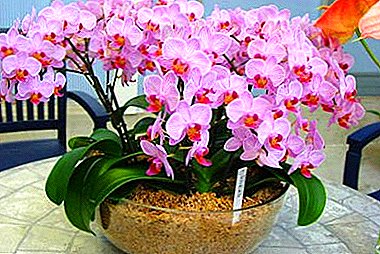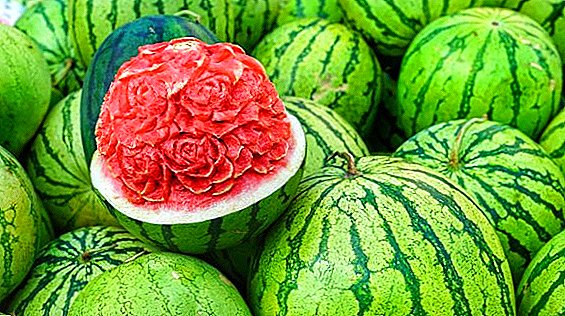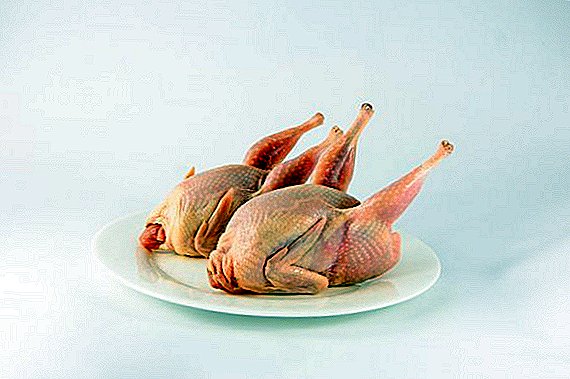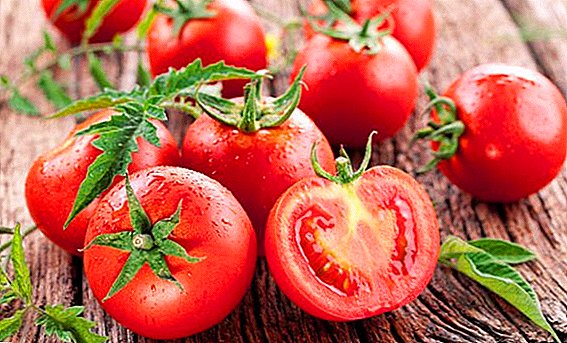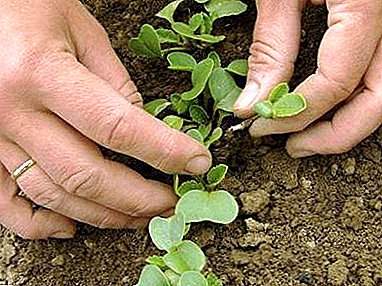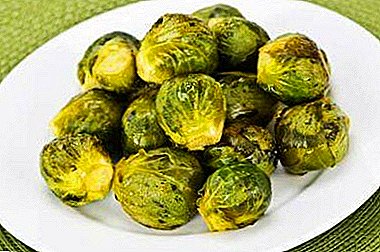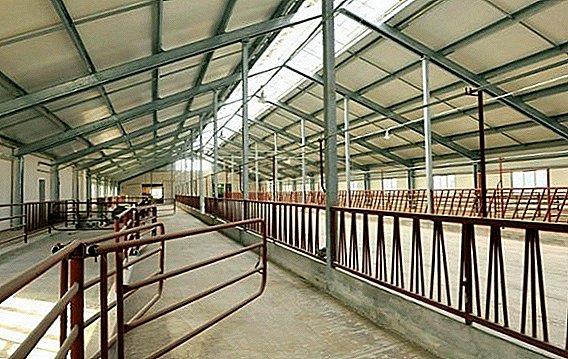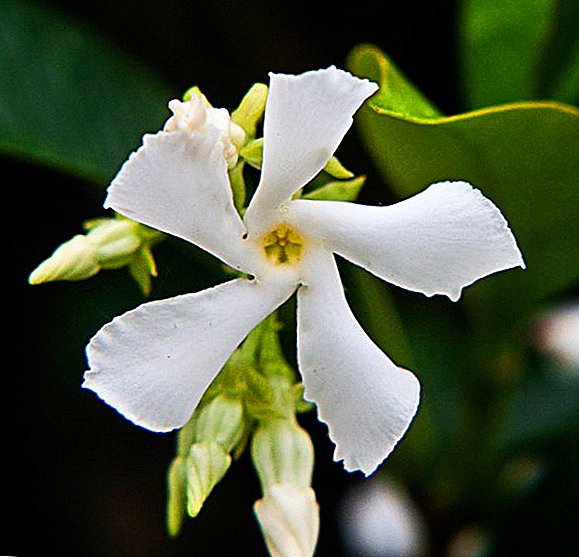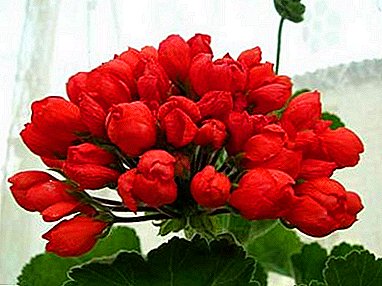
Red Pandora is one of the most popular varieties of tulip pelargonium among gardeners. Its inflorescences, consisting of 30-50 flowers resembling tulips, look like a small bouquet.
Next, we will tell what the plant looks like, the history of its appearance and the photo of the flower. Information on how and where to plant, what soil is needed, how to choose the right place for successful growth, and how to properly care will be cognitive.
Botanical description and history
The first grade of tulip-like pelargonium was obtained in 1966 by the specialists of the American nursery "Andrea". In Europe, they learned about the plant only two decades later, and among gardeners there was a lot of controversy about its origin - because of the structure of the flower and the low availability of its stamens and pistil, this variety is difficult to select and there is a theory that it originated from natural mutations of some varieties of zonal pelargonium.
All varieties of tulip-like pelargonium have different growth rates, shoot height, color, shape, and even number of petals.
Appearance and photo
The adult flower Red Pandora reaches medium size and forms a small bush. The variety has a characteristic carved dark green foliage, covered with a small down, which makes it velvet. Large (up to 5 cm in diameter) flowers forming inflorescences look like tulip buds and have a coral-red color with light streaks. The shape of the buds is slightly rounded.
The peculiarity of this variety is thin, not blooming flower petals until drying. The flowering of this species of pelargonium is not related to the season of the year.
Consider the photo looks like Tulip Pelargonium Red Pandora:





Where and how to plant?
For the cultivation of this plant is best to prefer potting with a height of 10-15 cm and a diameter of 12-14 cm, and always with the presence of drainage holes. If you plant a flower in a tank that is too loose, it will not bloom, and grow in a small one.
Ceramics are the most suitable pot material. - in such capacity the soil retains a certain temperature, and the air is distributed evenly over it.
You should not choose plastic and especially transparent pot. It is not known exactly why this happens, but in such containers the plant is very sick. If you plan to plant several pelargonium in one pot at once, then its diameter should be 22-25 cm. In summer, you can plant pelargonium near the house, in the usual soddy soil.
Important! Within two weeks after planting, pelargonium must be kept in a shade.
Lighting and location
The flower needs scattered sunlight, the most suitable place is the sill of the eastern window. If the plant is located in the sunny side of the room, it should be shaded, as it does not tolerate direct sunlight.
You need to ensure that in the room where the flower is, there were no air temperature drops. You do not need to place pelargonium on the windowsill, under which the battery is located and ventilate the room in the cold season, otherwise the plant may become ill. Pelargonium Red Pandora grows well on the sundeck with a moderate amount of light and air abundance.
The flower is afraid of rain, wind and drafts, therefore, as soon as the cold comes, it must be brought into the house.
Soil requirements
 Tulip pelargonium needs fertile soil - sod or compost. The best option of soil mixture, especially for a young plant, is sand, peat, humus and compost earth in equal proportions.
Tulip pelargonium needs fertile soil - sod or compost. The best option of soil mixture, especially for a young plant, is sand, peat, humus and compost earth in equal proportions.
For adult flowers, a mixture of compost, peat substrate, coniferous soil and humus is suitable. The main thing - to ensure that the soil was not too dense. Do not add much peat to the soil. The root system rots if water stagnates in the soil.
How to care?
Pelargonium of this variety is not too demanding to care, but some recommendations should be followed:
- air temperature should not exceed +25 degrees in summer and +20 in winter, otherwise the plant will stop blooming and stop growing;
- watering is necessary as the topsoil dries out (in the summer it is about every 1-2 days, in the winter - once a week) and best of all through the pan using boiled water at room temperature;
- for the formation of a lush bush before the beginning of the flowering period, the lateral shoots of pelargonium should be cut off;
- to prolong the flowering period, use liquid fertilizer with potassium and remove dried flowers;
- Red Pandora does not like rooms with high humidity and spraying;
- It is necessary to avoid direct sunlight on the plant and provide it with diffused light, and with a short daylight level - additional artificial lighting;
- You need to feed the plant in the warm season, using mineral and organic fertilizers, such as Kemira, Zircon, Ideal, Micrassa, or home organic fertilizers - egg shells or nettle extract.
Recommendation. Avoid high salt content when feeding.
Diseases and pests
The variety Pelargonium Red Pandora is quite hardy and resistant to diseases, however, cases of illness or damage by pests do occur. Most often the plant suffers due to:
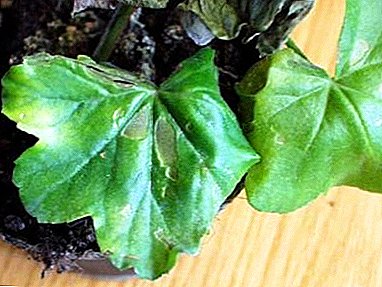 gray rot;
gray rot;- whiteflies;
- mealybug;
- spider mite;
- alternariosis;
- rust.
All these problems are a consequence of improper flower care. For the treatment of gray rot, rust and alternariosis, it is necessary to remove the affected leaves and use systemic fungicides, such as Fundazol. In the fight against insects help drugs such as "Akarin" or "Decis", help get rid of ticks help "Zolon" or "Ditox".
If the stems and leaves of pelargonium began to cast red - this is not a disease, but a signal that the plant is freezing.
Breeding
In the period from August to September, pelargonium is propagated by cutting method:
- To do this, it is necessary to cut vertical shoots from the mother plant so that they have 2-3 internodes, remove the inflorescences from them, and then place the cuttings in the mixture of "Kornevina" and crushed coal for drying.
- After that, the cuttings need to be planted in a wet substrate.
- Water the young plant should be regularly and carefully - on the edge of the pot and only when the earth dries.
- When the roots appear, pelargonium needs to be transplanted into a ceramic pot with drainage layer and soddy soil.
In the case of reproduction of pelargonium seeds:
- It should be planted in boxes in January or February, placing them on the surface of the soil and lightly sprinkled.
- After that, the box must be covered with film, creating greenhouse conditions.
- When there are 2-4 leaves on the plants, a pick is done, and after 6-8 weeks the plants are placed in permanent pots.
Red Pandora is an easy-to-care variety of tulip-like pelargonium, suitable even for a beginner. However, even such unpretentious flowers can be prone to diseases and pests that can ruin them, so even with the slightest signs of infection you need to take measures to save the plant. With proper care, pelargonium will delight the owners of the beauty and unusualness of their colors.


 gray rot;
gray rot;